Another episode of our Tech Q&A series has arrived and this week senior technical editor Warren Rossiter and technical writer Oscar Huckle, making his BikeRadar podcast debut, are here to answer your questions.
With technical editor Tom Marvin as your host, Warren and Oscar warn against converting clincher wheels to tubeless and discuss the merits of tubeless road tyres.
Oscar weighs up whether tubeless tyre inserts are necessary for cross-country mountain bike racing before Warren predicts the rise of 3D printing, but not for bespoke components nor frames.
The trio also reveal what they take on short and long rides alike, or in Tom’s case, get riding pals to carry for him.
Listen to the full episode below – or read on for a summary of Tom, Warren and Oscar's answers.
Is it unsafe to convert clincher wheels to tubeless using two layers of tubeless rim tape?
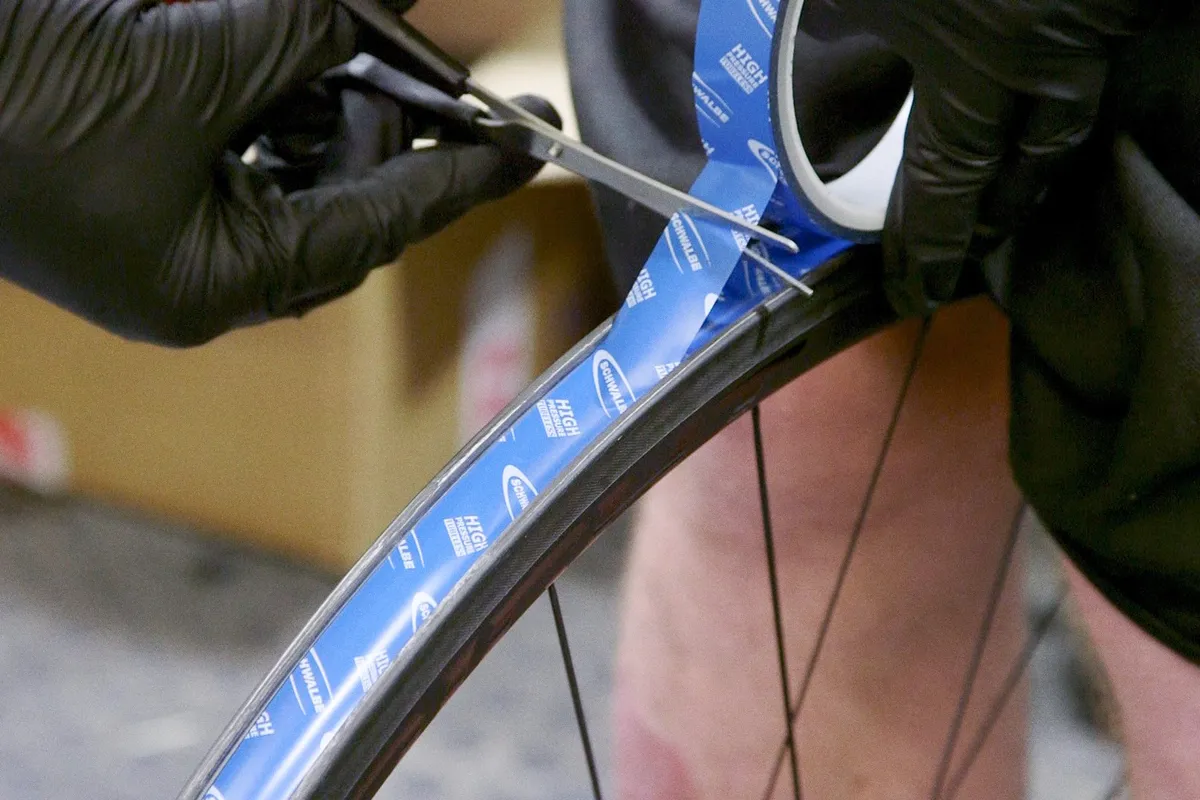
Warren: "I would say absolutely not. Hookless or hooked rims are made that bit stronger to account for the extra forces from the tyre being pushed out to seal against the rim.
"But, I’ve been sceptical about the issue of tubeless compatibility since hookless rims came on the road. If a tyre is built to the exacting ETRTO standards defined in tyre sizing then they should work.
"I’ve run a set of apparently non-compliant tyres on a set of tubeless rims for a year now and have had zero issues. They haven’t rolled off, burped or even lost any air.
"I think some rims could take the extra force required to seal the tyre with two layers of rim tape.
"But I would say that would impact the hooked hollow – the hollow in the rim where the tyre seats. The tape would build up the base of the rim and if you reduce those dimensions, then you might be looking at a blow-off or failure when riding.
"If you have a decent set of clincher wheels, with good tyres and light inner tubes, you are still going to have efficient rolling stock. I would suggest wearing out your wheels before upgrading to tubeless."
Tom: "Do any rim/tyre combinations work particularly well on the road?"
Warren: "Because people were wedded to a narrow inner rim profile, that didn’t make tyres easy to seat.
"Now people are broadening things out, so the inner average for a road rim is approaching more than 20mm. In gravel it is wider, approaching mountain bike standards of width.
"Now, seating a tyre is much easier.
"I remember dealing with tubeless rims when they first started to appear, which were still 17mm wide – a super-narrow rim width for a 23mm-wide tyre."
Tom: "Oscar, what’s your experience of road tubeless? Have you got any top tips to make life easier?"
Oscar: "I haven’t used road tubeless, but I’m sold on it for gravel bike tyres. Tubeless allows you to run lower tyre pressure, removes the risk of pinch punctures and the ride quality is much better.
"I’m not so sold on road tubeless. The standards for it aren’t quite as finalised as for gravel bikes and mountain bikes.
"In terms of the question, I’d say the same as Warren, that I wouldn’t recommend converting clinchers to tubeless.
"Although the idea of double-taping a rim is good because it provides a better seal."
Do I need tyre inserts for cross-country racing? Do I need to consider rim and tyre widths?
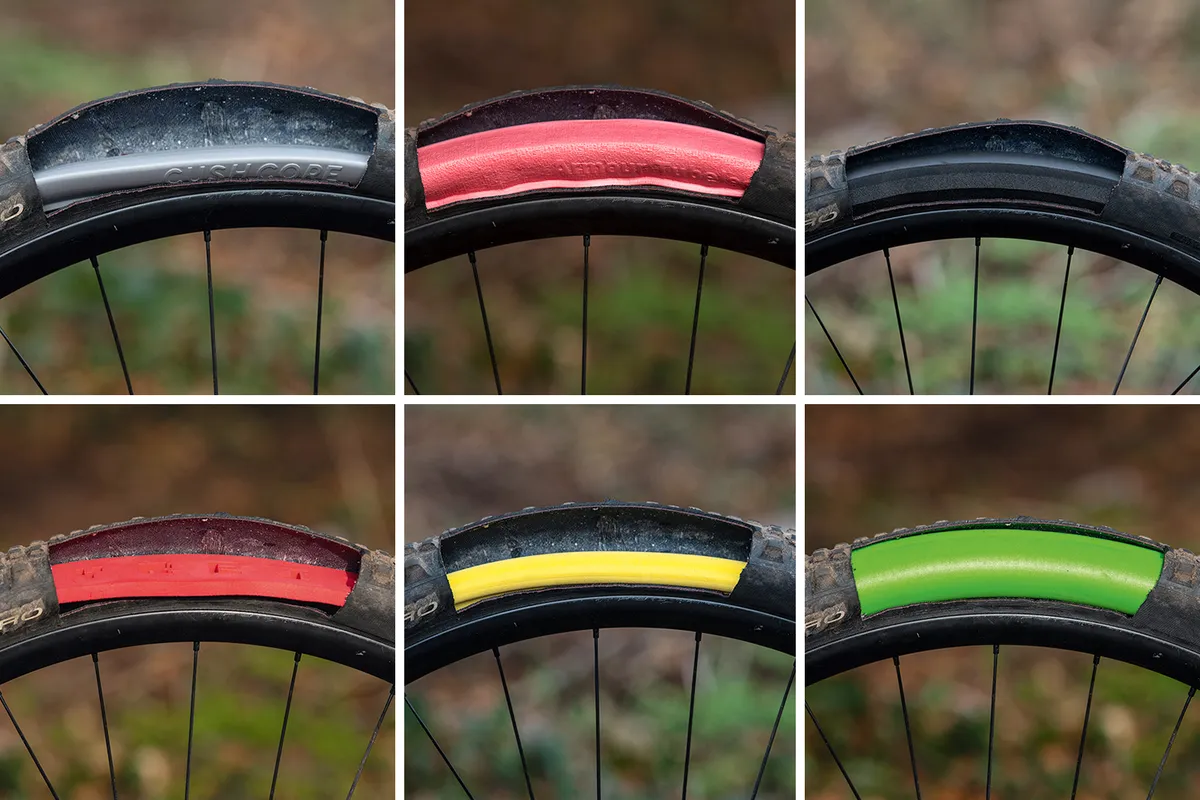
Oscar: "Tyre inserts are predominantly used in mountain biking, but they are becoming more prevalent in gravel riding and even on the road.
"It’s another layer between the tyre and rim that increases the sidewall stability because they provide further support and increased deflection, so the sidewall can move or fold if too much force is put on it.
"A tyre insert also allows you to run lower tyre pressure.
"The downside is extra weight, it’s something else you’re putting into your wheel. And it’s rotating weight, which is more important on wheels.
"The responsiveness of the bike is turned down a bit, too, by the added weight."
Tom: "And because of the extra surface area on the inside of the tyre, you tend to have to use more sealant."
Oscar: "When I used to work in workshops, often we used to see the insert soak up the sealant."
Tom: "Generally, cross-country racers would try to use the lightest tyre they can get away with, so inserts are going to increase weight in there.
"So would you say yes or no to tyre inserts for cross-country?"
Oscar: "I would say no, because cross-country is all about being lightweight. You could think about using a meatier mountain bike tyre if the course is more technical – a downcountry tyre with a thicker carcass.
"Or maybe have a look at what sealant they're using. That could be the problem if they're having a lot of punctures.
"And tyre pressure. There are a lot of factors to bear in mind. I think for XC it is overkill."
Tom: "As a counterpoint, on the rear wheel of the bike, if you are racing a more technical track, having a heavier-weight tyre provides that additional puncture protection that an insert also would offer.
"However, running a lighter tyre with a more supple sidewall does help with traction and comfort. Adding an insert might bring it to the weight of that more beefy tyre, but you should retain the ride benefits of the more supple tyre.
"It’s a bit of six of one and half a dozen of the other. But if they're racing more technical courses and want to protect against punctures, they could run higher pressures and take a hit on grip.
"Or using a heavier tyre with a more protected sidewall might be the way to go. If anything, to reduce the faff level and not have to use double the amount of sealant.
"And of course, these inserts aren’t cheap. You are looking at £50 to £80 (from $60 to $100)."
Oscar: "Some of them can be a pain to set up as well."
Tom: "The answer to the question about considering tyre and rim widths is no.
"You just have to match the insert width to your tyre width and make sure you pick the right one."
I had a Canyon Ultimate and a Focus Mares AX, both with hydraulic Ultegra brakes. On the Focus, I upgraded to non-series Di2. Why is the braking so much better on the Focus with the non-series Di2?
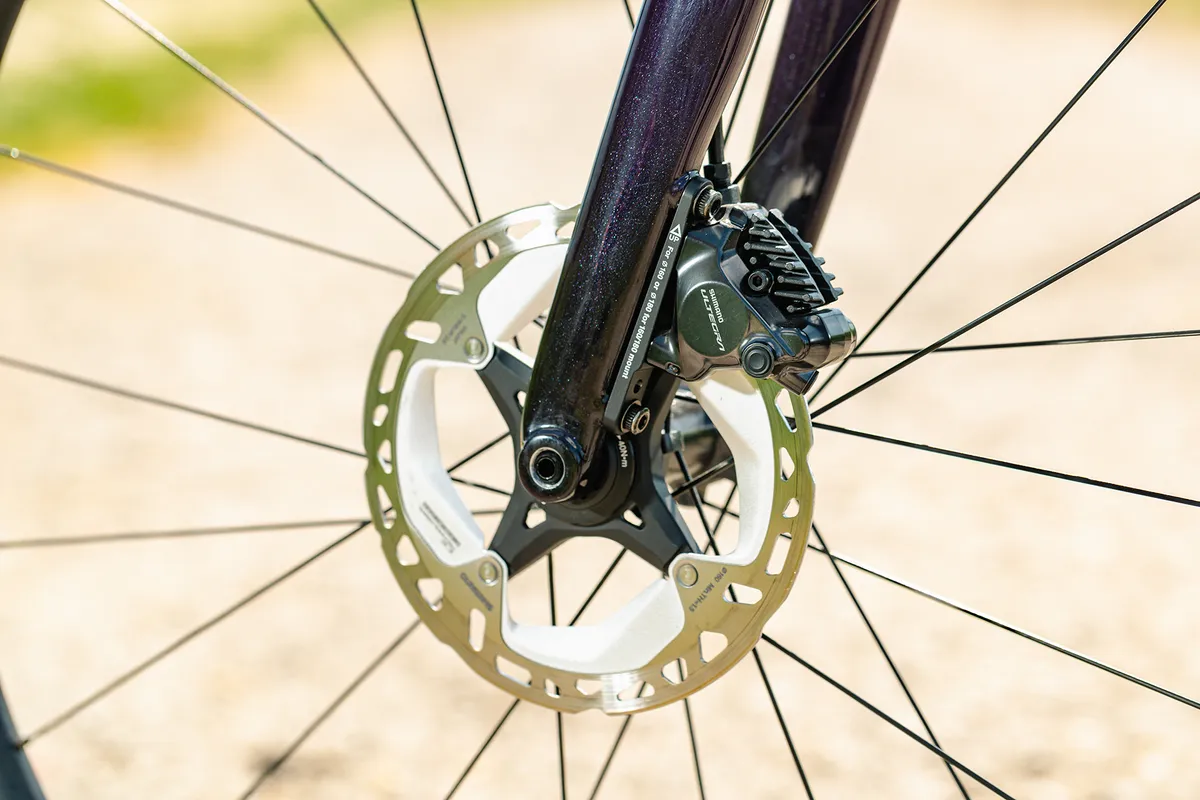
Tom: "On the face of it, it sounds like a setup issue, Warren. Have you got more insight?"
Warren: "It is a hard one to fathom.
"The difference between Ultegra and the non-series brakes, which are probably R785, is minimal.
"Both have ceramic pistons and are pushing from each side. The Ultegra brakes are a bit smaller and are a little lighter.
"If you're using the same wheels and rotors on both bikes, it can't be down to the rotors.
"The main loss of performance from brakes is either the hydraulic lines or the pads themselves.
"I can only imagine the Ultegra disc brake pads have become contaminated with oil, grease or general road detritus and those on the Mares cyclocross bike haven’t.
"You can check your disc brake pads for contamination by switching the pads between the bikes, because they are cross-compatible, and see if that difference persists.
"Another cause could be air in the Canyon Ultimate braking system. You can diagnose this by standing beside your bike and pulling the brake lever.
"If it sinks down towards the bar, it’s more than likely air is in the system.
"If, however, resistance is there and you feel the pad touch the rotor, it is probably okay."
Oscar: "It is weird the R785 braking feels better. If anything, those brakes are quite binary.
"The main thing Shimano changed when creating tiered calipers and brakes is changing the way the brakes felt.
"The new ones use Servowave and they have greater pad clearance. That could be a reason why the brakes feel better."
What’s the furthest you’d go without carrying anything, such as tubes, tools, food and water?
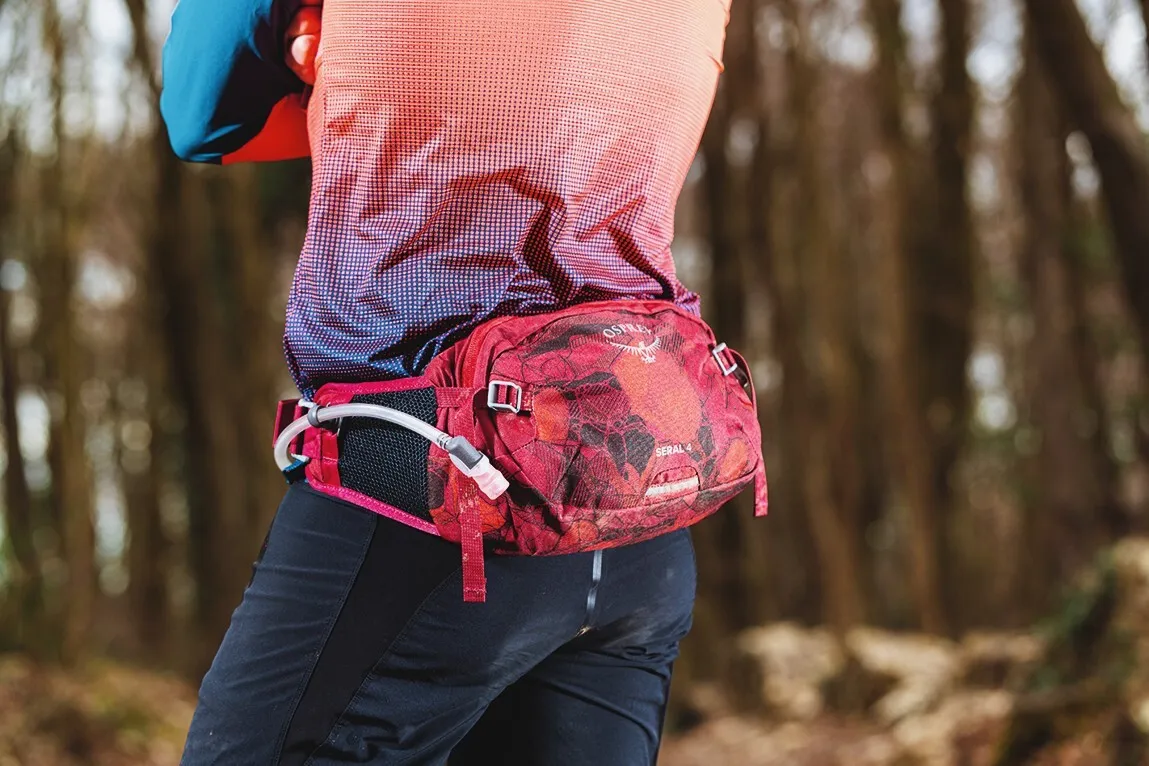
Oscar: "You can never plan a mechanical or puncture. You can do without tools, but think how long a walk you’d have back from your ride.
"I never ride without them.
"It’s the same for water. Generally, you should drink a bottle an hour. You can get away without food for an hour, but after that you need to eat something."
Tom: "If I’m riding in woods, close to the van, I won’t carry anything because it’s better riding without anything.
"But if I’m doing a big loop, hitting four different climbs, then I would probably carry a bum bag with a multi-tool, pump, energy bar and bottle.
"Riding without a bum bag is way better and there are bikes where you can fit an inner tube and CO2 inflator in the frame.
"That should keep you going for a few hours if you are well fuelled and hydrated before setting off.
"But if you are going on your own, be more careful."
Warren: "If you’re going on a big road or gravel ride, know your area.
"Make sure there are churchyards on your route. They have free drinking water.
"On a road ride, I use a tool cage in one of my bottle cages.
"I’m not the best person for fuelling long rides because I just forget."
Now Colnago is 3D-printing bikes with custom geometries, will we see the end of stock bikes as we ride bikes made bespoke to our size?
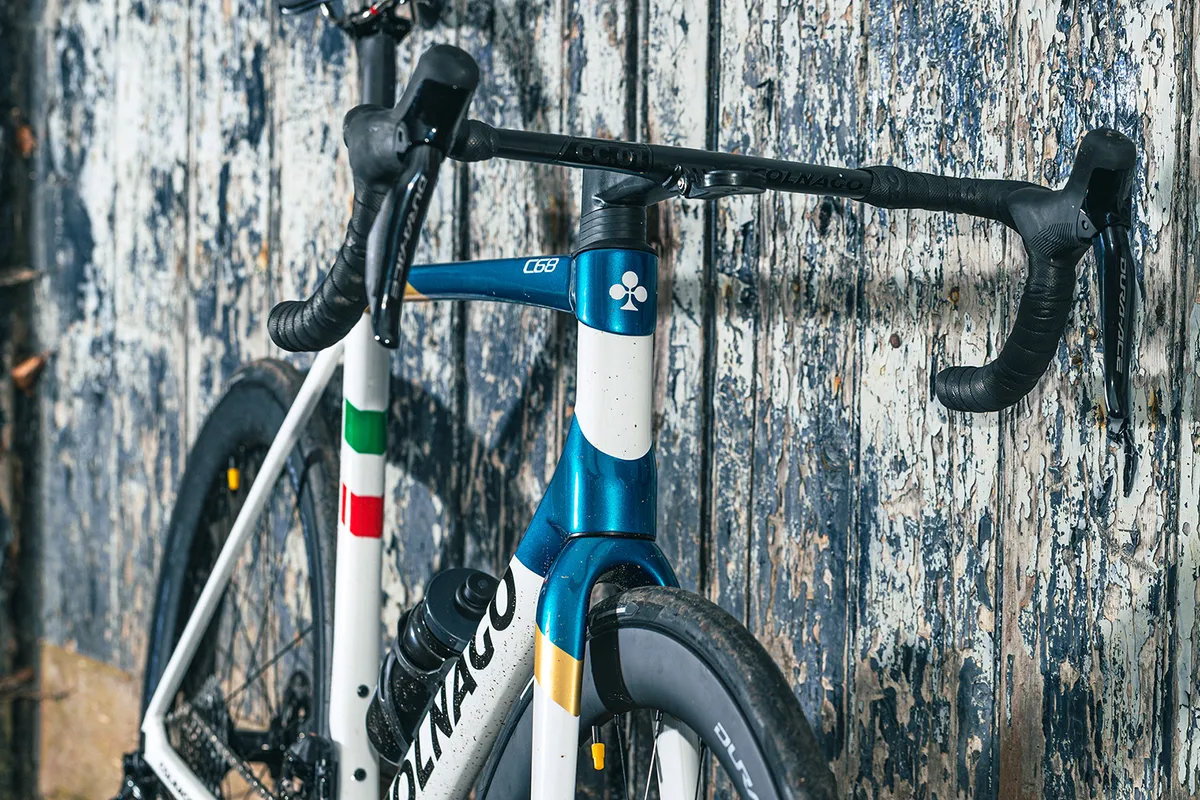
Warren: "I am all for experience of the custom and bespoke service. But is it necessary? Absolutely not.
"The 3D-printing revolution is exciting and what Colnago is doing with the C68 is fantastic.
"But I think the real benefit of 3D printing will come in contact points, such as road bike saddles.
"Having your hindquarters scanned and a saddle matched to that would make a huge difference to performance and comfort.
"Custom-printed helmets and handlebars would also be great, but I think the standard frame and fork are here to stay."
Oscar: "I think it depends on how the bike geometry fits me. I’m quite a typical build, so I don’t think a custom frame is necessary.
"I don’t think custom frames will become commonplace because of the cost to the bike builders and then us."
Should I fit new 2mm rotors to my Specialized Kenevo mountain bike?
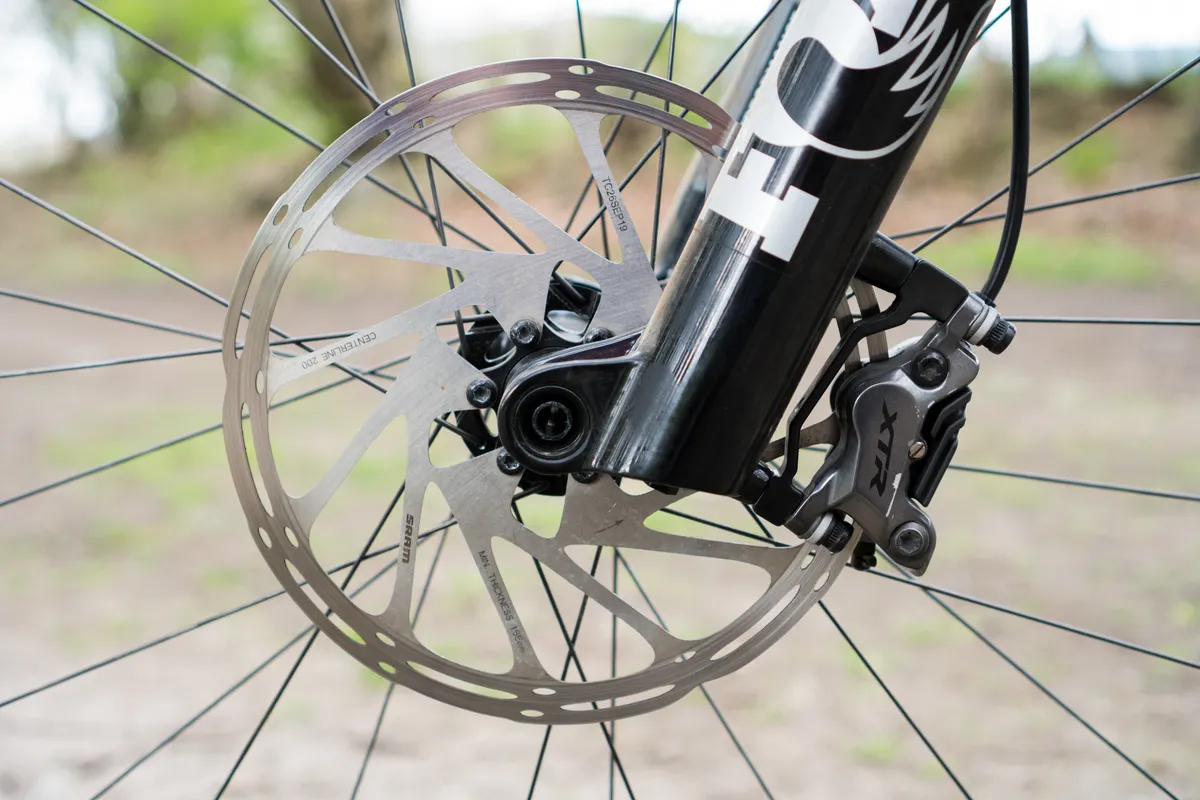
Oscar: "A thicker rotor will wear down slower, but I very rarely wear through rotors, so I wouldn’t bother or see performance benefits from after-market products.
"Generally, brands say you should match the brake calipers to rotors and I find that to be true.
"But fitting a larger rotor to the Specialized Kenevo, which is a long-travel bike, would add more braking power."
Tom: "Adding a thicker rotor can make setup more difficult and reduce mud clearance.
"Our advice is to stick with what you have got and replace like-for-like and size up your rotors if you need more power.
"But before adding a rotor, always clean it. A brand new rotor comes with contaminants from storage."
